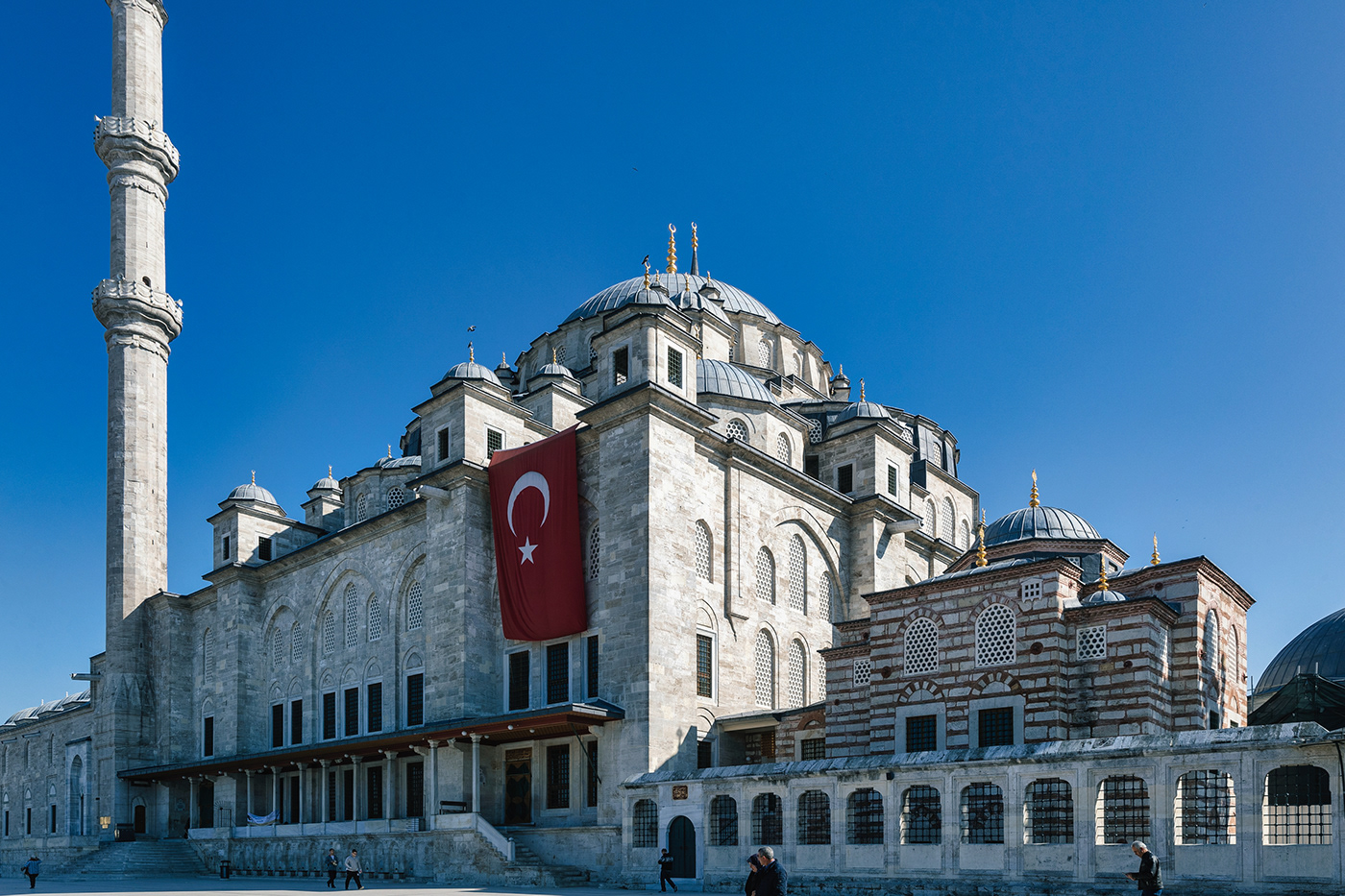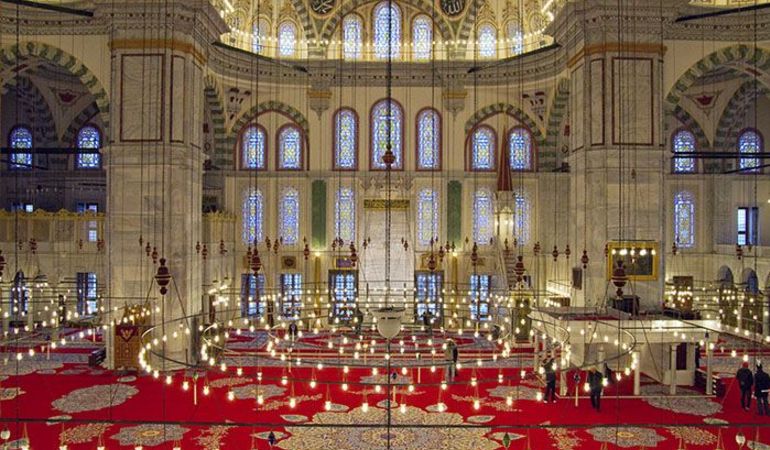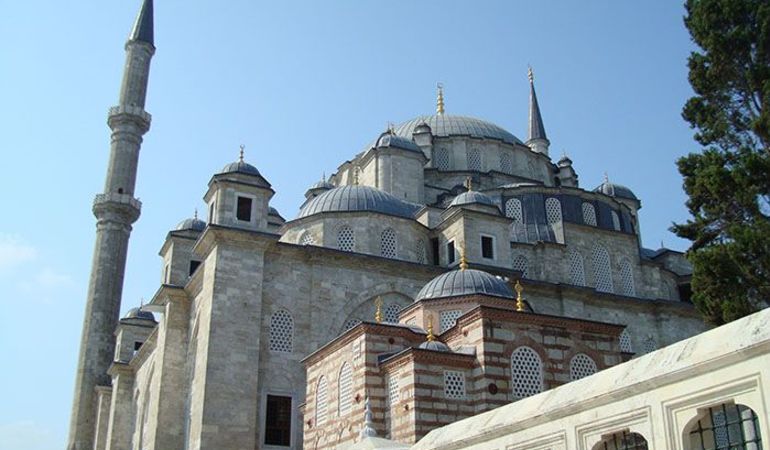Istanbul Fatih Mosque Complex, Conqueror’s Mosque or Al-Fatih Mosque in English is built by Mehmet the Conqueror between 1463-1470 to commemorate the conquest of Constantinople on one of the hills of Istanbul. It is assumed that the mosque is constructed on the hill where there was the Church of the Holy Apostles which was constructed in the Byzantine Era. The mosque is one of the biggest mosques in Istanbul in terms of its size. The mosque will be closed on prayer times, that’s why it would be better to arrange the visiting hour.

The History of Fatih Mosque
The mosque was originally constructed by Atik Sinan the Architect. (A little note: Atik Sinan must not be confused with Sinan the Architect. These are two different people). When the mosque was in its original form, the mosque contained 8 madrasahs, a hospital, a guest house, a soup kitchen, a library, and a hammam.
However, the severe earthquake hit in 1509, the mosque was merely damaged and then, in the era of Sultan Bayazid II, it was repaired. Unfortunately, another massive earthquake in 1766 destroyed the dome and the walls of the mosque. Therefore, the mosque was renovated according to a different plan in 1771 by Muhammed Tahir the Architect and it took the shape that what it looks like today. The remaining parts of the Fatih Mosque Complex are the mosque’s external portal, the tombs of Fatih the Conqueror and his wife, and some sections in the courtyard. That’s why, when you visit Fatih Mosque now, you will encounter the madrasas, library, tombs, and hospice.

The Architecture of Fatih Mosque
The original mosque has a single dome and a semidome which supports the main one. There is not a piece of information much about the first one, yet it is known that the second one is constructed according to Baroque architecture. When the mosque was constructed for the second time, it has a single dome in the middle and four semidomes. Today the main dome has a diameter of 26 meters and it is garnished with massive chandeliers. The present ornaments inside are similar to the other works of Sinan the Architect, however, the mosque is huge and it is one of the best examples of Turkish architectural design. The calligraphy art and the mimbar shows the influence of Baroque.
The enormous complex possesses not only a huge mosque but also buildings that work for social life. Firstly, eight big medreses were built, each of them has 18 classes for the students. These medreses had the worth of a large university back at that time. It is called Shanı-Seman Medrese and that medrese was teaching from astronomy, physics, and mathematics to medicine, theology, and law. The medrese was founded by Ali Qushji, who is a Persian scholar. Guest-house has 16 different columns and a beautiful courtyard. Today it serves with shops to its visitors.
It is a significant point that the mosque has a solar clock on one of the minaret’s walls. Building a solar clock generally is not a common practice in mosques. That’s why Fatih Mosque is varied from its counterparts. Also, the solar clock is recognized as one of the best models among its kinds.
In the graveyard, you do not find just The Conqueror’s and his wife Gülbahar’s tombs. There are also significant figures from both Ottoman and Turkey’s history. These are Gazi Osman Pasha and Halil İnalcık.
Entrance to the mosque is not paid, however, you can make donations for the continuity of the mosque.
How to get to Fatih Mosque?
From Taksim, bus lines which are 32T, 73, 80T, 89C, and 93T get to Fatih. After you get off the bus, you may need to walk for approximately 10 minutes. The M2 metro line is another option to arrive at Fatih Mosque. Yet after the metro, 36V, 86V, 37Y, and 38B buses get to Fatih. From Eminönü, 31E, 32,36KE, 37E, 38E, 90, and 336E are the bus lines that goes to Fatih. If you are coming from Anatolian Side, you may take Marmaray, and transfer to buses numbered 30D, 70KY, and 77.
What else is nearby?
After a peaceful experience, you can keep that mystic moment by walking the little ways of Grand Bazaar. The bazaar is serving the history, culture, and authentic souvenirs belonging to Turkish culture. You can buy some souvenirs and remember the experience in Fatih Mosque, Turkey. Also, on Wednesdays, the weekly bazaar is set near to Fatih Mosque, so that you can check out the goods which are sold. Later on, Suleymaniye Mosque can be a good decision to be able to extend the pleasure of sightseeing Fatih Mosque. Suleymaniye was also constructed in the name of Suleyman the Magnificent.
Where is Fatih Mosque Complex?
It’s located in Fatih, Istanbul.
How to get to Fatih Mosque?
From Taksim, bus lines which are 32T, 73, 80T, 89C, and 93T get to Fatih. From Eminönü, 31E, 32,36KE, 37E, 38E, 90, and 336E are the bus lines that go there. The M2 metro line is another option to arrive at Fatih Mosque.
What tourist places there are near to the Fatih Mosque?
Grand Bazaar, Suleymaniye Mosque, and weekly bazaar are the options when you visit Fatih Mosque.
Which architectural movement is followed when building the Fatih Mosque?
Fatih Mosque is constructed according to Baroque architecture.
Boats rentals are waiting for you at Teknevia for those who want to enjoy the sea more in Istanbul.
